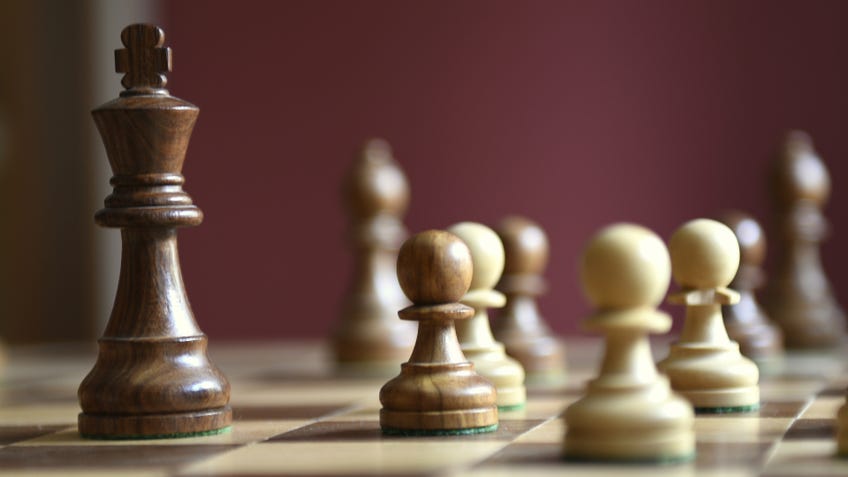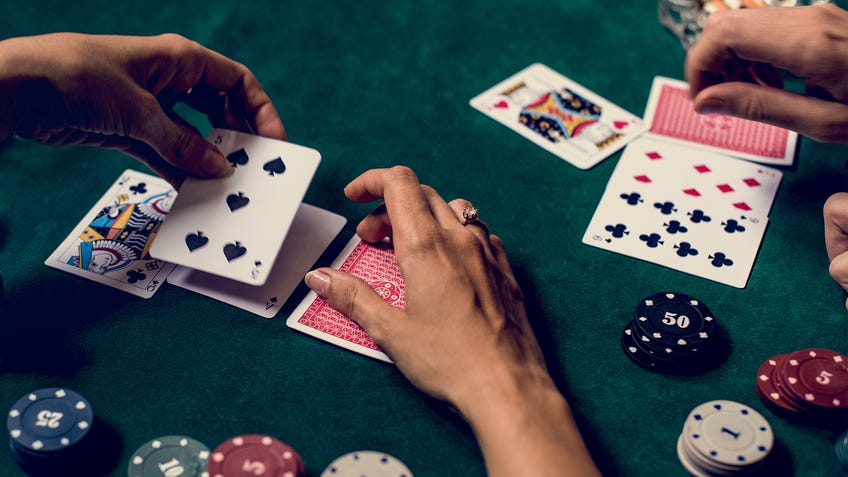How a card game helped avoid nuclear war
Or: a brief history of game theory.
Game theory is a way of analysing situations where multiple agents face choices whose outcomes are dependent on the choices made by others. It was invented in the early part of the 20th century by the mathematician and scientist John von Neumann, a prolific genius who was also, coincidentally, one of the key figures in the development of modern computer architecture.
Like all humans, von Neumann played games. As a child growing up in Budapest, he played Kriegspiel, the elaborate chess variant, with his brothers, and as an adult living in the US, he played poker.
Games that involved second-guessing your opponent’s choices while they second-guessed yours seemed, to von Neumann, to reflect the structure of interesting real-life situations.
Poker was the kind of game that von Neumann was interested in. For him, a game like chess was just a large calculation - you might not be able to work out the solution, as a practical matter, but it was obvious that there was one.
What von Neumann wanted to analyse were games that involved second-guessing your opponent’s choices while they second-guessed yours. This was the kind of game that seemed, to von Neumann, to reflect the structure of interesting real-life situations.

Game theory went on to have an enormous impact on a variety of fields, first and foremost economics, where it provided a rigorous logical framework for analysing the behaviour of consumers, firms and governments. Somewhat surprisingly, game theory has also been highly influential in biology, philosophy, sociology, law and politics.
The theory’s explanatory power comes from its ability to model, mathematically, the tangled, recursive structure of mutual decision making, whether those decisions are conscious choices made by calculating agents or the different “strategies” embodied in the genetic material of organisms by the process of natural selection. Game theory even provided key insights into the question of the origin of altruism - the mystery of how the endless, ruthless competition of natural selection, red in tooth and claw, could ever produce compassion, empathy, and self-sacrifice.
Like the concepts of probability and state machines, game theory is a vivid example of systems thinking. It models the world not as a linear series of causes and effects but as a dynamic system that defines a space of possible outcomes.

One of game theory’s central ideas is that of equilibria, situations where the system will remain stable because the various forces within it are in balance. The idea of equilibria helps us analyse social and political situations as if they were engineering problems - recognising when bad outcomes aren’t just the result of bad people behaving immorally but are the result of situations where existing norms and incentives are trapping people in a bad equilibrium.
In game theoretical terms, Mutual Assured Destruction is a kind of Nash equilibrium, a situation where none of the interacting parties can improve their outcomes by changing their current strategy.
The conceptual tools of game theory give us the ability to understand certain social problems and offer us a way to visualise solutions in the form of better equilibria with improved outcomes for everyone.
During the Cold War, game theory was used at places like the RAND Corporation to develop conceptual frameworks for thinking about nuclear conflict. One of these was the concept of Mutual Assured Destruction (MAD), which was used to describe a scenario in which both sides have sufficient retaliation capabilities such that any first strike would lead to unacceptable casualties on both sides. In game theoretical terms, MAD is a kind of Nash equilibrium, a situation where none of the interacting parties can improve their outcomes by changing their current strategy.
The brilliant Kubrick film Dr. Strangelove gives us a powerful satire of the military culture that produced MAD. In the film, Kubrick portrays game theory as a kind of madness, drunk on logic, disconnected from the reality of common sense and common decency, deluded by a false sense of its own power, bringing us to the brink of nuclear destruction.
But consider for a moment that the opposite might be true. It is possible that, without the cognitive toolset of game theory and its capacity to coldly calculate the unthinkable, humans might have destroyed the planet with nuclear weapons. Maybe, just maybe, a field of knowledge that came out of a close analysis of poker saved the world.
Let that sink in for a second. Maybe poker saved the world. Not in some abstract, metaphorical way. Maybe a game that was invented as addictive entertainment for degenerate gamblers literally saved the world. Even just the possibility that this is true tells us something about games, systems literacy and civilisation.
This is an edited extract from The Beauty of Games by Frank Lantz. Copyright 2023 MIT. Reprinted with permission of The MIT Press.

